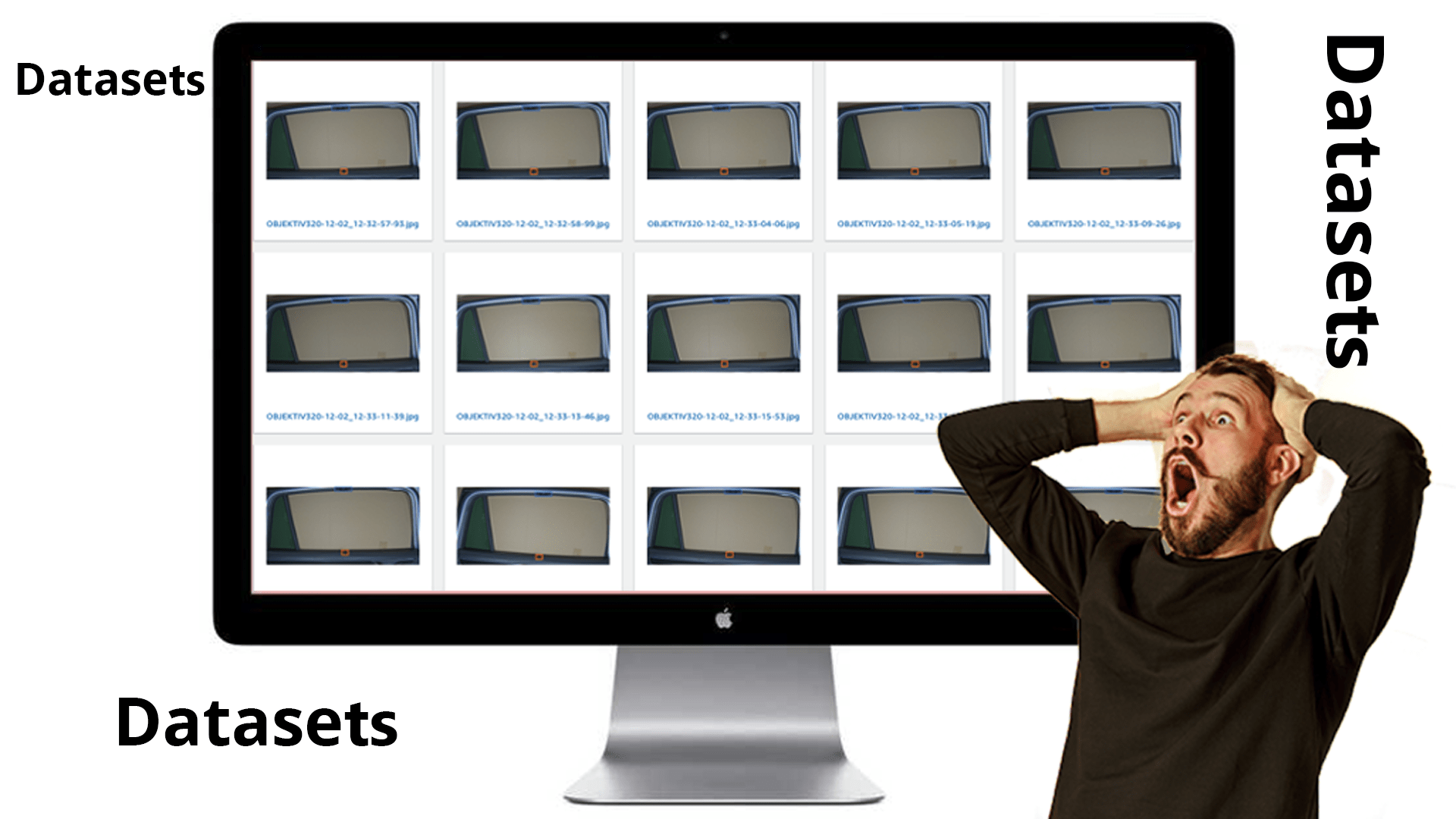
In the first part of our article, you learned when the use of AI for quality control is appropriate, and how to define defects properly. Now we will get to know the process of teaching the AI neural network the required skills in a limited timespan.
Step 3: Datasets, datasets and more datasets
From birth, humans learn continuously, observing the surrounding situations and recognizing what is right and what is not. They store information about what individual objects look like and remember various situations that may or may not occur. From this point of view, artificial intelligence (AI) is similar to a new-born child that has yet to obtain all this information. In live production, however, you do not have decades to teach artificial intelligence about all the possible situations, which is why you have to work with limited sources over a limited time. In order to teach AI the required skills, you generally have to use sets of examples (datasets), which characterize and define various situations and conditions from which the neural network (NN) learns. To train the NN, you typically need hundreds or even thousands of specific examples.
Let us demonstrate this on an example: If you want to verify whether a blind flange is correctly positioned on a product, you must take 100 photos with the blind flange and 100 photos without it. The neural network will use 80 photos from each group to train, and keep the remaining 20 to evaluate whether training was successful. But this isn’t enough. In order to use the trained model in production, you still have to validate it on something. For this purpose, you need more examples (photos) with different situations on which to verify that the model works properly. Naturally, you cannot use the same photos that were already used for NN training. Instead, you must take new ones that the NN does not know yet. This process is usually the most time-consuming and laborious, but the functionality of the entire evaluation system depends on it unconditionally. After all, cutting the 20 years which a human needs to learn how to behave in various situations down to several days, as needed by machines, obviously comes at a price.
End of part two. In the next post, you will learn about implementing AI in the production process.